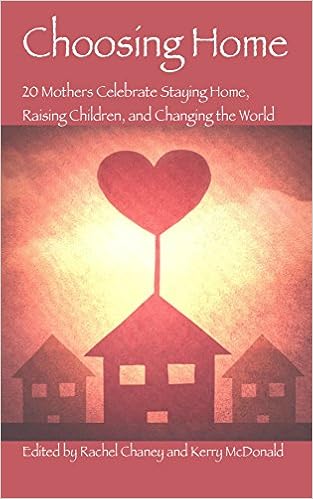Yesterday on this blog's Facebook page, I asked readers to share why they chose homeschooling for their family. My feeling is that although the homeschooling community is incredibly diverse, there are also many similarities between us. That proved to be true, as parents responded that key homeschooling features like "freedom," and "time," and "flexibility," and "individualization" are common drivers for us all.
When I first heard about homeschooling, it was 1998. I was a senior in college writing a research paper on education choice and the rising homeschooling movement, and became fascinated by this option. A college classmate of mine connected me with her family members who were homeschooling, and they invited me into their home to observe and ask questions. Want to know what my first question was? Of course: "What about socialization?"
I remember the mom's calm and eloquent response, pointing out the obvious difference between being social and being socialized. She described their vibrant and engaging homeschooling networks, community involvement, and neighborhood activism. She explained that much of the socialization that happens in schools is not positive and can lead to malevolent behaviors, like cliques, and bullying, and unhealthy competition. Her homeschooled daughter graciously played her violin during my visit, and was one of the most curious, articulate, and polite young children I had ever met. I was hooked.
Later, I went on to graduate school in education policy at Harvard and became more committed to the idea of education choice and innovation and alternatives to school. These were contested topics then as now. At that time, charter schools were really the only tangible way to study education choice in practice, and so I spent my graduate work doing just that.
Fast-forward several years later to 2009. I was a stay-at-home-mom, my oldest daughter was not yet three, and my son was an infant. That September, as all of my daughter's same-age peers were heading off to various preschools, I would frequently get asked by strangers at the park or around town:
"Where does your daughter go to school?"
"Oh, she's only two," I replied.
"So you're homeschooling," they remarked.
"No, she's only two," I said.
After several of these exchanges, I decided I should look into the homeschooling option more seriously and see what was available in my area. Since my earlier research days, it had always been something my husband and I had considered; I just didn't know it would be at age two that I would be investigating it seriously! Still, I am so glad I did because joining local homeschooling networks, attending homeschool park days, talking with current homeschoolers with all different approaches and learning philosophies, and reading as much as I could on the topic led me to know very quickly that my children would never go to school. We also met friends back then with whom we are still close and with whom our children have grown. I've learned that it's never too early (or too late!) to explore the homeschooling option.
According to new data released this month by the U.S. Department of Education, the number of homeschooled children has doubled since my senior year research project to 1.8 million children in 2012, or 3.4 percent of the overall school-age population. (As a comparison, about 4.5 million children are enrolled in U.S. K-12 private schools.) According to the new DOE data, the geographic distribution of today's homeschooling population is evenly split, with about one-third each in rural, urban, and suburban areas. "Concern about schools' environments" remains a top driver for homeschooling families, with 9 in 10 survey respondents indicating it was an important reason in their decision to homeschool.
A lot has changed for homeschooling and education choice since the late-90s. Homeschooling has become much more mainstream. Education choice is in high demand and family empowerment widens. There are numerous resources for homeschooling families, including community-based, self-directed learning centers scattered across the country. Unschooling, the self-directed learning approach we use, has gained in popularity and is also finding its way into conventional magazines and news outlets. It's not surprising to me that unschooling is such a fast-growing subset of the larger homeschooling population. Even the most traditional homeschooling parents often discover over time how much their children learn without being taught. These personal narratives are augmented by compelling research into the ways children naturally learn, much of which is summarized in Boston College psychology professor, Dr. Peter Gray's, book, Free To Learn.
While I still get asked that knee-jerk question about socialization that I so naively asked years ago, I find it happens less often. Many people know homeschoolers and unschoolers, and some have even considered the approach themselves. Homeschooling networks are diverse, active, and far-reaching, connecting homeschoolers to each other and their community's resources in myriad ways. Organizations and businesses, museums and libraries, nature centers and community colleges recognize homeschooling's popular rise and offer classes and resources to meet different needs and interests. Free, online learning resources like MIT’s OpenCourseWare, HarvardX, Khan Academy, Coursera, Duolingo, and many more allow for easy, on-demand access to a range of topics and subjects. Facilitating learning and pursuing knowledge has never been easier or more accessible.
It's a great time to be a homeschooler!
It's a great time to be a homeschooler!
























No comments:
Post a Comment
Note: Only a member of this blog may post a comment.